#serving cloaca
Text


Promotional pics of Leo and the Geico Gecko. Leo is serving so much cloaca in the second pic 😳😳😩🥴💚💚🦎
#leo#leo netflix#leophile#geico#geico gecko#gecko#cloaca#serving cloaca#his ass better not be cheating on bill burr turtle
10 notes
·
View notes
Text
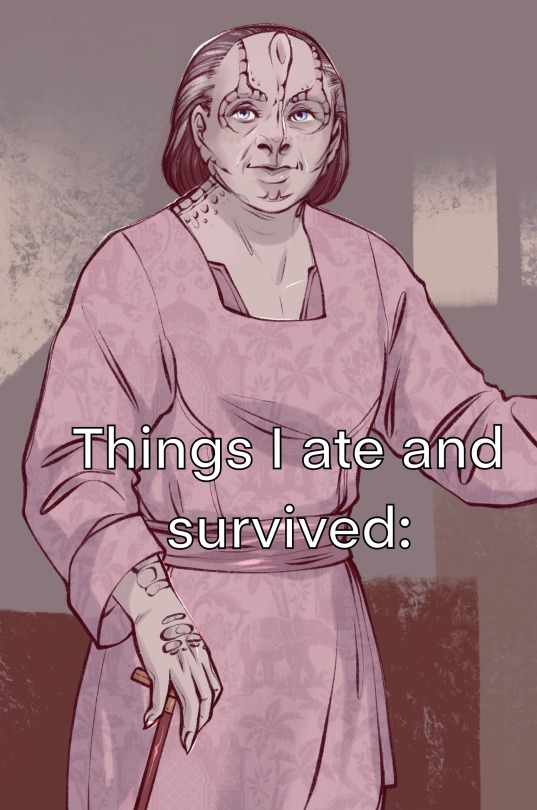
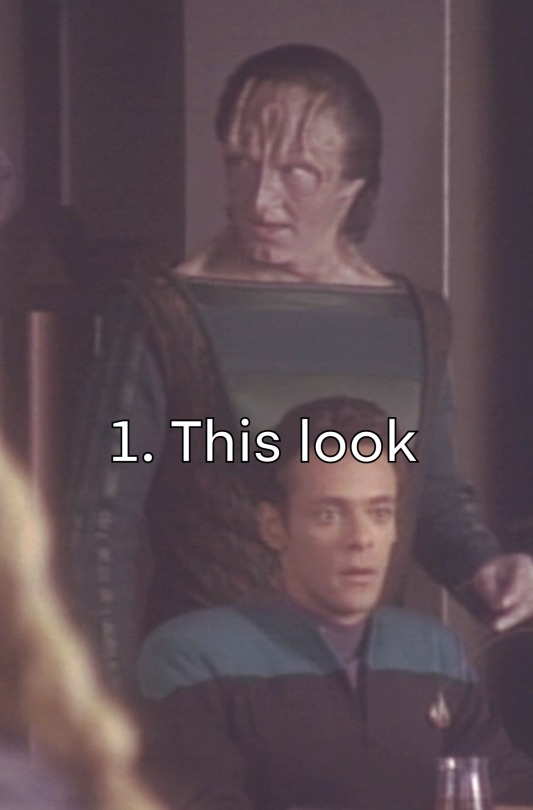
cardassias slutty grandpa…
#dee s 9#EVERY outfit is a serve. no crumbs left. He’s eating#garak#retired castellan garak sharing his experiences in Federation Territory#he drank the root beer folks. he lived like a feddy#and served cloaca like a true son of cardassia#i wanted to draw this so bad i didnt even bother drawing it all the way. or all that good khdkjhfkfhfkjh i was MOVED
266 notes
·
View notes
Text
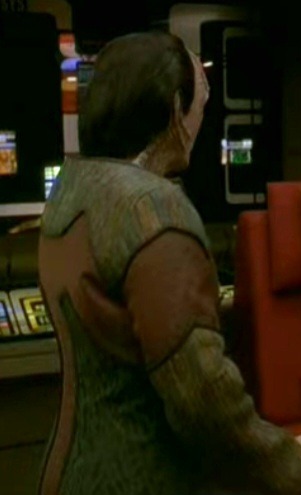
That arch. Bonjour.
#girl ur back is shaped like a hotwheels ramp#elim garak#serving cloaca as usual nothing to see here
127 notes
·
View notes
Text

31 notes
·
View notes
Note
tyler durden has a cloaca
Tyler Durden wishes we all shat pissed and fucked out of the same hole. No. If he was a bird he'd be in the 3%. Cock is too inextricable with these men
#ask yourself: is a cloaca the best i can do for fantastical genitalia? does it fit the characterization? does it serve thematic purpose?#why would you do this to me
2 notes
·
View notes
Text

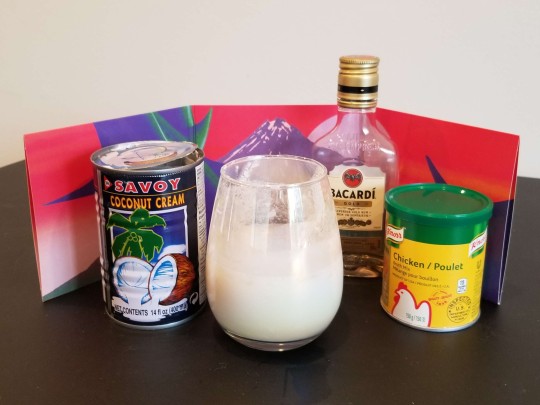
"Piña Cloaca"
3 parts water
5 parts coconut cream
5 parts rum
1/4 tsp chicken bouillon
ice
Alarming, but not immediately revolting. I'd recommend it if you want to serve someone a bad drink as a joke, but still want to have the drink afterwards. Honestly don't even attempt this without a blender due to the hardness of coconut cream and be aware that you CANNOT salvage it if there's too much bouillon
2/5 (more performance art than beverage)
#italaim#preemptively: I knoooow I didn't replace the word 'piña'. I'm aware. in fact it was my own dad's suggestion#cream blending was dissuasive enough that I let it sit in the fridge for a while to skim off the chunk layer... recommend this
376 notes
·
View notes
Text
the great thing about having a 3d printer is that when you discover you really need a specific thing, you can usually just make it in a few hours. now, the higher quality, larger, or more complex the print, the longer it will ultimately take, but if you’re in a bind, you can usually find a 3D model that might not fit with your whole decor scheme but is simple enough to print that it’s worth it.
like will it be perfect? no, but it’ll either serve the function you need it for until it breaks, or it’ll be just good enough to be an effective but utterly unaesthetic permanent solution.
anyway it turns out we didn’t have a star for the top of the tree, and most of the tree topper models online would have taken hours and hours to print, but applying the above principles, I fixed the problem in an hour and a half.

you know the old saying
one man’s star is another’s glow in the dark chibi cthulhu with an artificial pine branch its cloaca
489 notes
·
View notes
Text
yeah we all want to fuck dragons but sometimes i want to be the dragon doing the fucking. i want to pin a cute prince under my claws and nose at the tender spot between his legs as he struggles. i want to hold his head against my cloaca as his tongue draws my cocks out then shove them hard into whichever of his holes is closest. i want to feel him sliding down my throat, devouring him after he serves his purpose.
i should be allowed to fall asleep on a massive ever-shifting pile of gold with an adorable prince all snuggled up in my stomach. i have earned that
#terato#monster fucker#nsft#fantasy nsft#terato blog#monsterfucker#teratophillia#v0re blog#v0re#dragon#ooh hit every recommended tag#rare jovi pred post
83 notes
·
View notes
Photo

Title: Drown Me in You
Pairing: Darth Maul x Reader / Darth Maul x You (AFAB Cis)
Rating: Explicit
Word Count: 5,745 words
Summary: “They could not bring me back the same.”
It wasn’t an explanation you understood, finding him that first time, submerged to the ears so that only the glow of his eyes and the reach of his horns protruded above the brackish water of the swamp. Little webs of sodden lichen and moss clung to him, and with nothing visible save for his expression, all you felt was cold hunger —
A million miles between your kind and his, and not knowing his words were warning, you crouched on the shore, your bare toes sinking into the silt, and you held your human hand to him as if you could beckon the creature closer.
“I can help you,” you told him.
Beneath the surface, his smile was a reflection in razors.
“No, my dear.”
...
Nothing is wasted on Dathomir, and those that return to the planet often emerge from the waters... different.
For Mermay 2023: Mermaid!Maul x (AFAB) Reader
Warnings: Teratophilia, Exophilia, Mildly Dubious Consent, Sexual Coercion, Breeding, Oviposition, Size Difference, Alien Biology, Blood (mention), Mating Bond, Alien Physiology (Cloaca)
🖤❤️🖤 A preview of the fic is included beneath the cut, or you may jump directly to Ao3 to read it in its entirety. 🖤❤️🖤
“They could not bring me back the same.”
It wasn’t an explanation you understood, finding him that first time, submerged to the ears so that only the glow of his eyes and the reach of his horns protruded above the brackish water of the swamp. Little webs of sodden lichen and moss clung to him, and with nothing visible save for his expression, all you felt was cold hunger —
A million miles between your kind and his, and not knowing his words were warning, you crouched on the shore, your bare toes sinking into the silt, and you held your human hand to him as if you could beckon the creature closer.
“I can help you,” you told him.
Beneath the surface, his smile was a reflection in razors.
“No, my dear.”
He did not retreat, but sank, sending ripples across muddy water that echoed in the Force, leaving your shirt sticking to the sweat on your back and your hot skin fettered with Dathomir’s humidity; its bog-reek and festering, fecund decomposition stuffed into your nostrils a guarantee that whatever dies here feeds the nexus.
It’s just the way of things: death, decay, and life’s return.
Nothing is wasted.
It makes the planet rich.
When he blinks, the membrane leaves his shining gaze slits of flame, burning and hollow, and achingly alone —
A solitary creature who will not show you his face, though he wears the markings of a Nightbrother, forgotten to the swamps and consumed by solitary contemplation between the splayed roots of trees, and in the recesses where the water and the Force stir together.
He watches you — a being so powerful that he can breathe these waters despite the difficult conditions — but something is missing in that burning stare.
“What dwells here is more monster than man,” he says. “You should go. Do not return.”
“But I can help you —”
Because you felt some relief at finding another living soul who might communicate with words and feelings after so many nights studying the ruins of a civilization hostile to outsiders. Dathomir whispers, but its interest is entirely self-serving:
You think the nexus wanted you to find him.
“No one can help me,” he says, and then he’s gone.
Darkness descends when the swamp closes over his head, and only the slap of water against the trees from the lash of a powerful, spiked tail fin reveals his true nature as he vanishes beneath the surface.
The world falls to quiet, the silence muffled as you realize that all life goes still when in the presence of a powerful predator, and slowly, your heart pounding, you listen to the first trill and glug of life returning.
He’s gone, you think.
But somewhere in the distance, between the drape of moss and vine, you think you can see the bright gleam of his consideration, looking at you from a distance safe enough to realize he’s intrigued.
Read the rest on Ao3 >
#terato#Darth Maul#Maul#Darth Maul x Reader#Darth Maul x You#Maul x Reader#Maul x You#Mermaul#Mermay#spicy#Darth Maul Fanfic#Maul Fanfic#Mermay Fanfic#Mermaid Darth Maul#Mermaid Maul#Nightbrothers#Nightsister Magic#Book of Sith#Star Wars Legends#Star Wars PWP#Dathomir#AFAB Reader#AFAB Cis Reader#mermaid x afab reader
171 notes
·
View notes
Text
Worldbuilding: Inter-Species "Relations"
You're finally at the chapter where it happens. You've been building up the tension for this scene for the entire story. Your pirate captain has captured her quarry, the slippery merman who's held her most private imagination since she first saw him. They're alone now, hearts racing, eyes darkening, and neither one can deny how much they want each other. But now that it's time for these two to come together in a passionate display of mutual desire and good-old-fashioned fun, you've realized something:
You don't actually know how they fit together.
You have a vision for this story, and you specifically want a sex scene in it, so this gap of knowledge is therefore a matter of great consequence.
This guide will explore each step of this potentially tricky puzzle through the lens of analogous species of animals. However, it hopfully contains every step you need to write a cross-species encounter confidently, even if your story takes you to a magical world far, far away.
The Shape of Your Non-Human Parts
First thing's first, you'll want to figure out the equipment you're working with. The reproductive organs, like any others, are built to fulfill a need. Different animals have different needs, whether it's depositing a packet for later use, keeping unwanted mates from bearing children, or socially bonding with both male and female partners. You'll need to figure out what your creature's needs are, as this will influence the shape and position of their parts, which will, in turn, influence the positions and practices humans need to use to be compatible.
Some things to consider:
•If your creature is a quadruped, they will probably be built for a "mounted" position. This means your females will be oriented for those who are standing directly behind them. Your males may also have their parts positioned further up on their bellies, or they maybe longer or even flexible to reach.
•About 97% of birds on Earth do not have a lock and key hookup. Both sexes instead have a delicate, multi-function hole called a cloaca that they briefly kiss together to mate. Of the other 3%, some have been observed to have parts that are… fiercely competitive in nature.
•Social animal species, such as dolphins, bonobos, and bats, are more likely to get jiggy for pleasure and bonding. In the bonobo's case, some structures are also suited for use with same-sex activities. Even snakes have anatomy to make coupling enjoyable.
•If your creature has structures that would hurt humans, such as a feline's barbs, you don't have to Change Him. A silicon sheath or even a specialized condom can make all the difference. And fantasy folks, don't worry; condoms are not a modern invention.
•About 90% of fish reproduce by fertilizing eggs that are already outside of the female's body, so there's no bumping of uglies at all. The ~10% of fish that are live-bearing (such as sharks) have a fin on their underside called a gonopodium that serves that more familiar role of inception.
•Crabs tend to embrace tightly underwater for an extended period of time — up to days — while they wait for the female to molt. Once she's free of her hard shell, the male will slip special antennae into equally special pores on her underside, where she'll keep his materials until she's ready to build a clutch. (Depending on the species, the male will stay with her for protection until her new shell hardens.)
•Never be afraid to make things look and act how you want them to. As fun as researching different animal anatomy is, in the end, it's your world. And anyway, of all structures of the animal kingdoms, reproductive organs are arguably the most diverse. This means you can get as quirky and interesting as you want. There are even species where the female is the pitcher and the male is the catcher.
How Does the Human Fit In?
Now that you know what your alien captain's packing under the hood, your human lieutenant can shoot their shot. But before things can get moving, everybody needs to be in a position they can act in.
Depending on the individual, a vaguely normal timeframe for humans to go at it is 3 to 10 minutes. It may not sound like a lot of time, but that period is very physically active, and if things aren't ergonomic, it's all too easy to tire out or even get hurt. Both parties and whatever limbs they have need to be arranged in a way that isn't painful, and that allows for ease of motion. Think about where their bodies have to touch, and come up with a couple of positions that would work well. If the anatomy between parties is different enough, you may have positions your humans like more, and others that your aliens prefer.
Sex Furniture, Your Very Best Friend
In some cases, there is no "natural" way for both bodies to stay lined up. That's where the magical world of assistive furniture comes into play. If your society is sex-positive and includes both species, then the likelihood of having specialized furniture to help with love-making is extremely high.
It doesn't have to be complicated, either. It could be a large pillow with a groove to help your centaur stay straight on their back. It could be a padded block to give your satyr more traction. Or it could be a special couch that's made to put one or both parties at a favorable angle.
Remember again that whatever the furniture looks like, its purpose is to keep both (or more) individuals comfortable and (usually) able to move.
Don't Underestimate a Good Manual
If someone's put in the work to make assistive furniture, chances are someone else put in the work to make a manual. You may giggle, but sex manuals are, in fact, a thing.
This is a more in-world step, but it's worth considering. If your characters are inexperienced (either with each other's species or with sex in general), then the privacy and patience of a manual can be a life-saver. And it creates an opportunity for your characters to both crowd around an intimate instruction guide, discussing the things they do and don't like the looks of, and agree on the expectations for their encounter.
Climax and Resolution
Now that you've got it all figured out, your human and dragonkin are finally turning up the heat. But before you look up National Geographic footage of large reptiles, remember what your goal for the scene is. Your audience is human and, generally speaking, you want to get them hot and bothered. Whatever fun and strange things you've got going on, you'll want to relate them back to the human experience at this point. If your Point of View character is a human, then it's easy enough. If not, then you've got a little more work to do.
For mammals, the cycle of excitement, pleasure, climax, and refraction will be practically the same. You don't need to sweat the differences here, unless you're specifically interested in the amount of time your non-human will be spending in each phase.
For birds and tuatara reptiles (a small group of reptiles characterized by spines on their backs [like iguanas]), the act normally consists of kissing cloacas. This may seem relatively passionless, but there are ways to make it steamy. Since the cloaca isn't designed for the rigors of mammalian intimacy, you could take things slow and give attention to the other ways the characters are feeling each other, too. Kissing and caressing within each other's embrace can still be hot, even if your harpy only climaxes emotionally.
For other reptiles, the biggest difference will be in the fact that they're cold-blooded. A lizardfolk can still feel their heart race, still love how their partners smells, still have a heavy-lidded gaze, but they won't flush or become hot to the touch. Also, since reptiles don't shiver to maintain heat, they might not tremble when stationary (though they can still be shakey when they move).
If your PoV character is merfolk, depending on how far into the deep end you go with them, you'll thankfully have a lot of human material to draw from. But if you want to play up the novelty, they may notice how warm a human is, and how velvety their skin feels. Additionally, a bit of a dance, teasing chase, or display could go a long way to convey excitement, or even nervousness.
If your aliens or seafolk are more crab-like, then it can seem tricky, but don't fret. You might take the chance to explore the dynamic from your alien's perspective of needing to be held, or of the urge to protect their mate, for an extended period of time. Since feeling cared for and needed can really make the heart sing, this is something you can use to demonstrate intimacy, even if you don't decide to adjust the anatomy for a more traditionally human experience.
Aftercare
Not all scenes will include this step, but it is still an option. If you choose to show the afterwards, it can be a good place to transition from a shared experience back into the differences between species. Is your kappa still ready to go, even if your human's tuckered out? Is your hive-minded alien going to sleep off a pheromone high? Maybe your mermaid just needs to spend the next hour by her partner's side. If this kind of scene is useful to your story, it presents ample opportunities for world- and character-building.
---
I hope this has been helpful! If I missed anything, if you have further or more detailed questions, or even if you're curious about what this article did to my targeted ads, feel free to send me an ask or DM!
Happy writing! ;D
#worldbuilding#writing#writeblr#romance#monster lover#how to#writing tips#writing advice#writing romance#after dark
33 notes
·
View notes
Text
Shocking how these are the same character
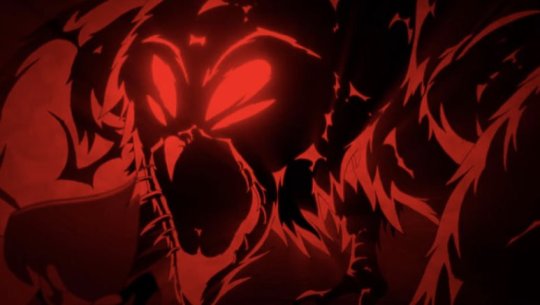
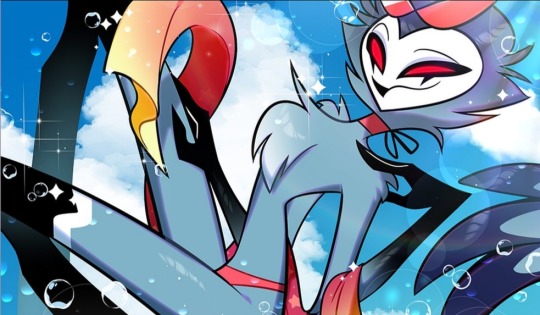
He's serving cloaca
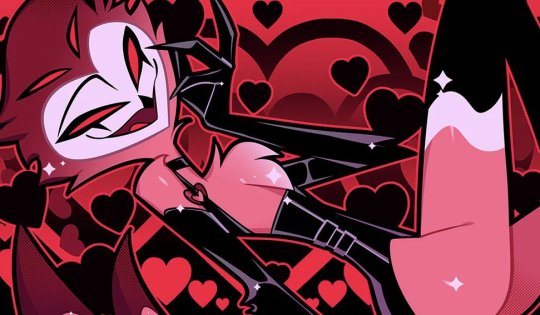
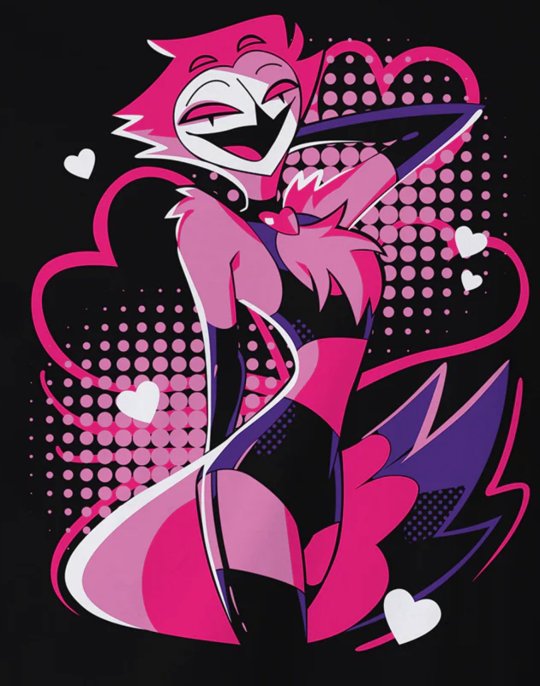
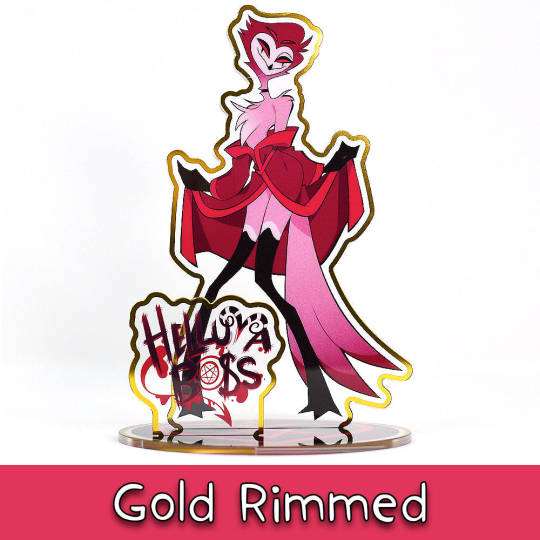



10 notes
·
View notes
Note
oooh are you as obsessed and intrigued with platypus(es?) as I am with whale sharks??? wanna tell me all about them????
OOOOH! A PLATYPUS ASK!!! Alright. Gonna try maintaining a formal voice, but only because I can't communicate using nothing but giggles and giddy squeals!!! I am also taking this ask as an excuse to go on a one hour platypus studying spree!
Alright! So! A lot of people seem to be surprised when they learn that platypuses have venom, but they seem to get more surprised when they learn the venom is PAINFUL as HECK! The pain can last for days, weeks, even months, and most pain killers don't even work on it! Apparently, there was some guy in australia who got stung by a platypus in the hand, and, when interviewed about it FIFTEEN years later, HE STILL FELT DISCOMFORT AND STIFFNESS IN THE HAND! FIFTEEN YEARS LATER! So, yeah, platypus venom really hurts. It doesn't kill humans, but apparently it can kill small animals. ALSO. PLATYPUSES GLOW UNDER UV LIGHT?! Yep, Platypuses are fluorescent!! Also, platypuses have FIVE chromosomes to determine sex, which usually birds have?! That's not where the bird similarities stop though, NOPE! Platypuses also have a cloaca, which serves as a multi purpose tool, in a sense! Absolutely hilarious, because people have been wondering what the heck platypuses even are for the longest time! Platypuses are one of only FIVE different monotremes! There are only FIVE MONOTREMES! Monotremes meaning egg laying mammals, the other four being echidnas. Also, little fun platypus tidbit, according to my Korean dad, the word platypus in korean is literally translated to, "duck raccoon." Also, the scientific name of the platypus has been changed, like, three times! It was originally going to be, Platypus anatinus but then they discovered that some random BEETLE of all things had already called dibs on the Platypus part, so they changed it to Ornithorhynchus paradoxus, absolutely hilarious that they decided to add, "paradox," at the end! The first bit, Ornithorhynchus, just means duck-like. So this name really just means, "duck-like paradox." Who says scientists aren't creative? Anyways, it was finally changed to Ornithorhynchus anatinus, which means, DUCK-LIKE BIRD-SNOUT! WE GET IT GUYS! STOP WITH THE BIRD COMPARISONS!
Anyways, I love platypuses so much(I am by NO MEANS an expert, and all my knowledge comes from the internet, so, you know, I might be wrong). ALSO, I do not know exactly how much you love whale sharks, but I would love to hear all about them!!!
#asks#platypus!!!!!!!!!#I really hope that what I said is comprehensible#also sorry for answering really late
19 notes
·
View notes
Text
For the July 5th Wet Beast Wednesday I was going to do a 4th of July special where I would cover the "state" fish of Washington DC, the American shad. Unfortunately, the American shad is not a very interesting fish so instead I'm covering the amphiuma. It still kind of counts because they're endemic to the southeastern United States. Amphiumas are salamanders belonging to the genus of the same name. There are three extant species, the three-toed, two-toed, and one-toed amphiuma. Common nicknames for them include conger eels and Congo snakes, both of which are incorrect as they are not snakes, not eels, and not from the Congo. They are notable for their serpentine appearance and almost entirely aquatic lifestyles.

(image: a two-toed amphiuma)
Amphiumas have a very elongated, eel-like body plan. Their limbs are extremely reduced, but have not been fully lost and species can be identified by the number of toes. They live almost their entire lives underwater, though they have been seen crawling out onto land during wet weather such as rainstorms. As many live in seasonal wetlands or other places that can dry out, they have developed the ability to aestivate, a form of hibernation that happens during the summer and conserves moisture. They also secrete a thick and slippery coating of mucus that serves a number of purposes including protection of the skin, keeping the skin wet, and helping escape from predators. Amphiumas can get very large for salamanders, especially the three-toed and two-toed species, which can reach over a meter in length each. The two-toed amphiuma is the longest salamander in North America, though the hellbender still takes the record for the largest. They are primarily carnivores, feeding on small fish, snakes, turtles, amphibians, the occasional mammal, aquatic invertebrates, and occasionally plants. They seem to have a particular taste for crayfish. Interestingly, they have been seen passing up smaller crayfish to focus on larger ones, indicating they can determine when prey will be too insubstantial to be worth the effort of eating it. They can communicate with each other using clicking sounds that are only made in the presence of others.

(image: am amphiuma looking adorable)
They retain a number of juvenile traits including a lateral line. This is an organ system found in fish and amphibians that detects movement of the water and changes in water pressure. Most salamanders only have a lateral line as larvae, but the almost-fully aquatic lifestyle of the amphiuma has led to it retaining the lateral line into adulthood. Unlike some other aquatic salamanders, including the siren, axolotl, and olm, amphiumas do not retain external gills as adults, though they do retain gill arches. While they can respirate through their skin, the amount of oxygen obtained in this manner is not sufficient to keep the amphiuma alive. Amphiumas have extremely large lungs that take up about half of their body length. The group has a unique respiration cycle in which they have to exhale twice to fully empty their lungs and use a combination of mouth and nostril pressurization and smooth muscle groups in the lungs to breathe.

(image: an amphiuma with its mouth open)
Male amphiumas are usually longer and have larger heads than females. While traits like this often indicate male-to-male competition for mates, this has not been observed in amphiumas. In addition, some populations do not have this type of sexual dimorphism. Females are typically the ones to court males. Pair will coil their bodies around each other until their cloacas line up. The male will then transfer a sperm packet into the female's cloaca. Females will pick a secluded area to lay their eggs, up to 200 at a time, in a long strand. The female will coil around her eggs to protect them until they hatch. Females generally mate every other year.

(image: somebody holding an amphiuma)
Amphiumas are not dangerous to humans, though they can deliver a painful bite if disturbed. None of the species are endangered, though the one-toed amphiuma is considered near-threatened and is the leas understood of the species.
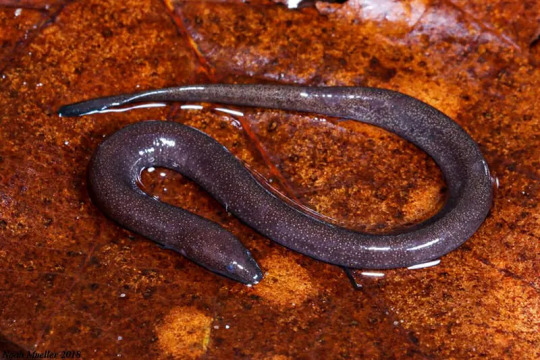
(image: a one-toed amphiuma)
#wet beast wednesday#biology#zoology#ecology#aquatic biology#amphiuma#salamander#animal fact#slimy boi
15 notes
·
View notes
Note
Hey, so I've noticed Octolings have one indented "ear" and I heard it's a remnant of their siphon. Is this true, and if it is does it serve any purpose these days?
Nope, not true!
Octolings do have slightly different ears, yes- but it's not because it's the siphon. Instead, this is actually to help them better pinpoint noises! Similarly to animals like barn owls, having two slightly different shaped or placed ears can actually help them pinpoint exactly where a noise is coming from- important for species that prefer ambushing in the dark evolutionarily.
The actual siphon split when it evolved, into what's now their single nostril, their ink gills, and the cloaca. Breathing is done through the siphon, ink is expelled through the gill, and waste through the cloaca.
There's a good model of the siphon here.
36 notes
·
View notes
Text
Una coppia di colombacci uniscono i loro corpi nell'estasi suprema che è propria dell'idillio dell'amore
Mentre ero a correre, due bellissimi colombacci, appollaiati uno accanto all’altro su un cavo del telefono, hanno attirato la mia attenzione. Il maschio si piegava di lato e strofinava testa e becco sulla testa della femmina, un pochino più piccola di lui. Incuriosito da queste dolci effusioni, mi sono fermato e ho osservato la femmina ricambiare il gesto affettuoso.
Pochi secondi dopo, la femmina si sporge decisamente in avanti, mettendosi in posizione quasi orizzontale. Il maschio, cogliendo immediatamente il segnale, fa un passo di lato e si posiziona sopra di lei, reggendosi con le zampe nella zona posteriore del corpo della femmina.
In quel momento i due colombacci uniscono e sfregano fra loro le cloache, ovvero le aperture nelle quali confluiscono i sistemi riproduttivo, urinario e digerente di tutti i rettili.
Questa unione, chiamata bacio cloacale, è l’atto sessuale di tutti gli uccelli sprovvisti di pene (ovvero la maggioranza). Serve per trasferire lo sperma da una cloaca a l’altra. Ed è finita in meno di 10 secondi. Comunque più della media, probabilmente a causa del precario equilibrio dei due uccelli sul cavo telefonico.
Dopo di che, il maschio fa un altro passo laterale, ritornando esattamente nella posizione dove si trovava prima dell’accoppiamento. La femmina, invece, fa ben cinque passi di lato, allontanandosi parecchio dal maschio…
Appena voltatomi per riprendere a correre, ho sentito distintamente il maschio accendersi una sigaretta.

Foto di un colombaccio che ho scattato nella primavera dell’anno scorso.
3 notes
·
View notes